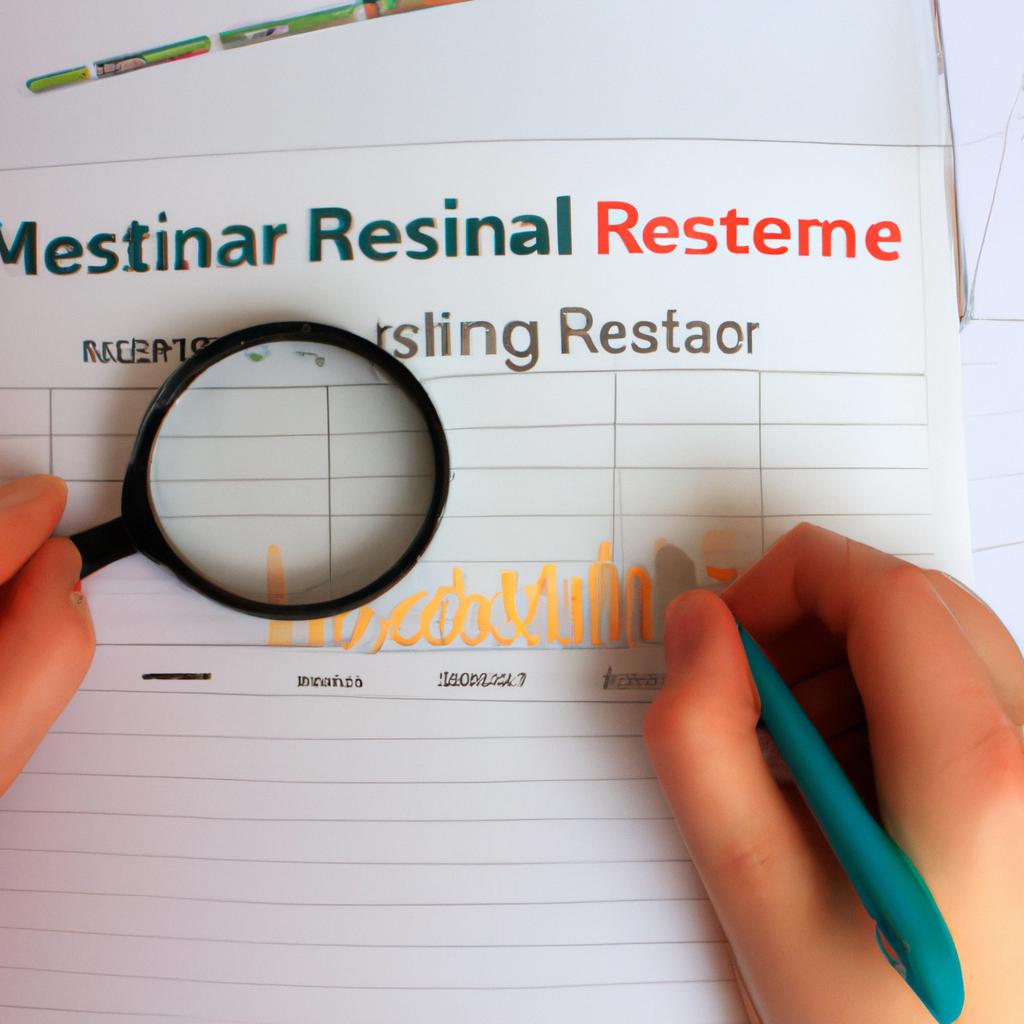The 1031 exchange, also known as a like-kind exchange or tax-deferred exchange, is a real estate investment strategy that allows investors to defer the payment of capital gains taxes when selling and purchasing properties. This powerful tool has gained popularity among savvy investors looking to maximize their returns and build wealth through real estate transactions. For instance, consider the case of John, an investor who owns a residential rental property in a rapidly appreciating neighborhood. Instead of selling his property outright and paying significant capital gains taxes on the profits, he decides to utilize the 1031 exchange to reinvest those funds into another property without triggering any immediate tax liability.
One of the key benefits of the 1031 exchange is its ability to provide investors with increased flexibility and liquidity in their real estate portfolios. By deferring capital gains taxes, this strategy allows investors to move their investments from one property to another while preserving their equity and avoiding unnecessary tax burdens. This can be particularly advantageous for individuals seeking to diversify their holdings or upgrade properties within a specific market segment.
Moreover, by leveraging the power of the 1031 exchange, investors can potentially generate higher returns on their investments over time. As they continuously roll over their profits into new properties without immediately paying taxes, investors can take advantage of compounding growth and appreciation in the real estate market. By constantly reinvesting their funds into new properties, investors can potentially increase their overall cash flow and build a more robust real estate portfolio.
Additionally, the 1031 exchange allows investors to consolidate or consolidate their properties. This means that instead of owning multiple smaller properties, an investor can exchange them for one larger property, which may offer better economies of scale and potential for increased rental income.
It is important to note that there are specific rules and requirements that must be followed when executing a 1031 exchange. These include identifying replacement properties within strict time frames, ensuring the value of the replacement property is equal to or greater than the relinquished property, and using a qualified intermediary to facilitate the transaction. Therefore, it is crucial for investors considering a 1031 exchange to work with experienced professionals who can guide them through the process and ensure compliance with all regulations.
Overall, the 1031 exchange can be a powerful tool for real estate investors looking to defer capital gains taxes, maximize returns, and build wealth through strategic property transactions. However, it is essential to thoroughly understand the rules and seek professional advice before embarking on this investment strategy.
What is a 1031 exchange?
What is a 1031 exchange?
A 1031 exchange, also known as a like-kind exchange or a tax-deferred exchange, is a strategic method used by real estate investors to defer capital gains taxes when selling an investment property and acquiring another similar property. The concept behind this exchange is rooted in Section 1031 of the Internal Revenue Code (IRC), which allows taxpayers to reinvest their proceeds from the sale of one property into another without immediate tax consequences.
For instance, consider the case of John, who owns a rental property that has appreciated significantly over time. Rather than simply selling his property and paying substantial capital gains taxes on the profit, John decides to utilize a 1031 exchange strategy. By doing so, he can defer those taxes and use the entire sales proceeds to invest in another property with potentially higher income potential or better prospects for long-term growth.
To better understand how a 1031 exchange works, it is important to highlight some key features:
- Tax deferral: One of the primary advantages of utilizing a 1031 exchange is that it enables investors to defer the payment of capital gains taxes until they eventually sell their replacement property.
- Like-kind requirement: To qualify for a 1031 exchange, both relinquished (sold) and replacement properties must be classified as “like-kind.” However, this does not mean that they need to be identical; rather, they should fall under the broad category of real estate held for business or investment purposes.
- Strict timelines: A successful 1031 exchange requires adherence to certain strict deadlines. Once the initial property is sold (the relinquished property), there are specific timeframes within which an investor must identify and acquire suitable replacement properties.
- Qualified Intermediary involvement: To ensure compliance with IRS regulations during a 1031 exchange transaction, investors typically engage the services of Qualified Intermediaries (QIs). These third-party facilitators play a crucial role in facilitating the exchange and ensuring that all requirements are met.
By employing a 1031 exchange strategy, investors gain significant tax advantages while maintaining their investment capital. In the subsequent section, we will explore the benefits of using a 1031 exchange for real estate investments, further elucidating why this approach is favored by many savvy investors seeking to optimize their returns and minimize tax liabilities.
Benefits of using a 1031 exchange for real estate investments
To better understand how a 1031 exchange can be utilized in real estate investments, let us consider an example. Imagine that John owns a rental property worth $500,000 and decides to sell it for personal reasons. Instead of receiving the proceeds from the sale directly, John chooses to complete a 1031 exchange by reinvesting the funds into another qualifying property.
A 1031 exchange involves several key steps and requirements:
- Like-Kind Property Requirement: The replacement property acquired through a 1031 exchange must be “like-kind” to the relinquished property. This means that both properties should be of similar nature or character, regardless of differences in quality or grade.
- Identification Period: Within 45 days after selling their original property, investors must identify potential replacement properties. They are allowed to identify up to three options, referred to as the Three-Property Rule.
- Exchange Period: Once identified, investors have 180 days from the sale date of their original property to complete the purchase of one or more replacement properties.
- Qualified Intermediary (QI): A QI is required during a 1031 exchange process to facilitate the transaction and hold the sales proceeds until they are used for purchasing the new investment property.
Understanding these essential aspects will help investors navigate through a successful 1031 exchange smoothly.
| Key Steps in a Successful | Emotional Response |
|---|---|
| Identify like-kind | Engaging |
| replacement properties | |
| within designated period | |
| Choose qualified | Excitement |
| intermediary | |
| Complete purchase | Satisfaction |
| within specified time |
As you delve deeper into understanding this powerful tax-deferral strategy, it becomes evident that identifying suitable replacement properties plays a crucial role in successfully executing a 1031 exchange. In the subsequent section, we will explore various aspects of identifying replacement properties to ensure a seamless transition from one property investment to another.
[Transition into next section: Identifying replacement properties for a 1031 exchange]
Identifying replacement properties for a 1031 exchange
Benefits of using a 1031 Exchange for Real Estate Investments
In the previous section, we discussed the benefits of utilizing a 1031 exchange for real estate investments. Now, let’s delve into the process of identifying replacement properties for a 1031 exchange. To illustrate this further, consider the following example:
Imagine you are an investor who owns a commercial property that has significantly appreciated in value over the years. You decide to sell this property and utilize a 1031 exchange to defer capital gains tax on your profits. The next step is finding suitable replacement properties within the designated timeframe.
When searching for potential replacement properties, there are several key considerations to keep in mind:
- Location: Look for areas with high growth potential and strong rental demand. Consider factors such as proximity to amenities, transportation hubs, and economic indicators.
- Property Type: Determine which type of real estate aligns with your investment goals and risk tolerance – residential, commercial, industrial, or multi-family properties.
- Cash Flow Potential: Analyze projected rental income against expenses like mortgage payments, maintenance costs, and property management fees to ensure positive cash flow.
- Long-Term Appreciation: Assess the potential appreciation of the property by analyzing historical trends and future development plans in the area.
To better understand these considerations, refer to the table below outlining different aspects related to each factor:
| Factor | Considerations |
|---|---|
| Location | Proximity to amenities |
| Transportation accessibility | |
| Economic indicators | |
| Property Type | Residential |
| Commercial | |
| Industrial | |
| Multi-family | |
| Cash Flow | Projected rental income |
| Potential | Expenses (mortgage payments, maintenance costs) |
| Property management fees | |
| Long-Term | Historical trends |
| Appreciation | Future development plans |
By carefully evaluating these factors and utilizing the table as a guide, you can narrow down your options and identify replacement properties that align with your investment objectives.
Understanding the timeline and deadlines for a 1031 exchange is crucial to ensure a smooth transaction.
Transition: Now let’s shift our focus towards understanding the timeline and deadlines for a 1031 exchange.
Understanding the timeline and deadlines for a 1031 exchange
Having understood the process and requirements of a 1031 exchange, let us now delve into the crucial step of identifying suitable replacement properties. To illustrate this further, we will consider a hypothetical case study involving an investor named Jane.
Paragraph 1:
Jane recently sold a commercial property in California and is looking to reinvest her funds into another property that aligns with her investment goals. As she begins her search for potential replacement properties, it is important for her to keep certain factors in mind:
- Location: Identifying areas with high growth potential or strong rental demand can increase the likelihood of appreciating property values and consistent income generation.
- Property Type: Different types of properties offer varying levels of risk and return. Assessing options such as residential, commercial, or multi-family units allows investors like Jane to evaluate their preferences based on long-term prospects and market conditions.
- Financial Viability: Careful analysis of financial metrics such as cash flow projections, cap rates, and potential tax benefits helps Jane determine whether a particular property fits within her investment strategy.
- Due Diligence: Conducting thorough research about the property’s history, condition, any existing liens or encumbrances enables Jane to make informed decisions while mitigating risks associated with unforeseen complications.
Bullet point list (emotional response):
Investors often experience mixed emotions when embarking on this critical phase of finding suitable replacement properties. They may feel excited about new opportunities but also anxious due to uncertainties surrounding real estate investments. Here are some common emotional reactions during this stage:
- Anticipation: The prospect of discovering promising investment options generates excitement and anticipation for future success.
- Apprehension: Concerns about making the right choice can lead to feelings of anxiety and doubt.
- Eagerness: Investors eager to capitalize on favorable market conditions may be motivated by a sense of urgency in finding the perfect replacement property.
- Optimism: The potential for higher returns and wealth accumulation fuels a sense of optimism, encouraging investors to persevere through challenges.
Table (emotional response):
| Emotional Reaction | Description |
|---|---|
| Anticipation | Excitement and eagerness towards discovering new investment opportunities. |
| Apprehension | Feelings of anxiety and doubt regarding making the right choice. |
| Eagerness | Motivated by a sense of urgency to capitalize on favorable market conditions. |
| Optimism | Positive outlook driven by hopes for higher returns and increased wealth accumulation. |
Paragraph 2:
Through diligent research and analysis, Jane shortlists several properties that align with her investment criteria. To facilitate her decision-making process further, she creates a table comparing these options based on factors such as location, property type, financial viability, due diligence findings, and emotional responses evoked during her search:
Emotional reactions often play an influential role in shaping an investor’s preferences when identifying replacement properties. By acknowledging these emotions while employing objective evaluation methods like creating tables or conducting thorough due diligence, investors can make informed decisions that balance their rational goals with their underlying desires.
Transition into subsequent section about “Tax implications of a 1031 exchange”:
Understanding the key components involved in identifying suitable replacement properties is crucial before delving into the tax implications of a 1031 exchange. By gaining clarity on how different properties align with one’s investment objectives and considering various emotional responses throughout this process, investors like Jane are better equipped to navigate the complexities associated with reinvesting funds from the sale of their previous property.
Tax implications of a 1031 exchange
Having explored the intricacies of understanding the timeline and deadlines for a 1031 exchange, let us now delve into the tax implications that accompany this strategy. To illustrate its practical application, consider a hypothetical scenario where an investor named John owns a rental property valued at $500,000. Seeking to defer capital gains taxes through a 1031 exchange, he identifies a replacement property worth $600,000 within the specified timeframe.
Tax Implications:
The decision to engage in a 1031 exchange comes with several potential tax benefits for investors like John. By deferring capital gains taxes, individuals can allocate more funds towards acquiring higher-value properties or diversifying their real estate portfolios. Here are some key points regarding the tax implications of a 1031 exchange:
- Tax Deferral: One of the primary advantages is the ability to defer capital gains taxes on the sale of an investment property as long as it meets specific criteria outlined by the Internal Revenue Service (IRS). This allows investors to reinvest all proceeds from the relinquished property into a new one without immediate tax obligations.
- Basis Adjustment: When participating in a 1031 exchange, any deferred gain from the original property carries over to the replacement property. The basis of the new asset will be adjusted accordingly, potentially reducing future taxable income upon its eventual sale.
- Estate Planning Benefits: Utilizing a 1031 exchange can also offer estate planning advantages since beneficiaries receive stepped-up basis upon inheritance. This means they assume ownership of assets with values based on market levels at the time of inheritance rather than when initially acquired.
- Depreciation Continuation: Another notable consideration is that depreciation schedules carry forward during a 1031 exchange. Investors can thus continue claiming deductions associated with depreciation on their newly acquired replacement properties.
Table – Comparison between Selling Property Directly vs. Engaging in 1031 Exchange:
| Aspects | Selling Property Directly | Engaging in 1031 Exchange |
|---|---|---|
| Capital Gains Taxes | Pay immediately | Deferred |
| Basis Adjustment | N/A | Adjusted for new property |
| Estate Planning | Standard | Stepped-up basis |
| Depreciation Continuity | N/A | Carries forward |
Understanding the tax implications of a 1031 exchange is crucial, but it’s equally important to consider key factors when utilizing this strategy for real estate investment. Let us now explore some essential considerations that investors should keep in mind during their decision-making process.
Key considerations when utilizing a 1031 exchange for real estate investment
Understanding the tax implications of a 1031 exchange is crucial, but it’s equally important to consider other key factors before deciding to utilize this strategy for your real estate investments. By exploring these considerations, you can make informed decisions and maximize the benefits of a 1031 exchange.
One example that illustrates the significance of these considerations involves an investor named Sarah. Sarah owns a residential property in a growing neighborhood but wants to diversify her portfolio by investing in commercial real estate. She decides to explore the option of a 1031 exchange to defer capital gains taxes on her current property.
When considering a 1031 exchange, there are several essential factors to keep in mind:
- Property Identification Period: After selling their initial property, investors have only 45 days to identify potential replacement properties. This timeline requires careful planning and thorough research to ensure suitable options are identified within the given timeframe.
- Like-Kind Requirement: The IRS stipulates that both the relinquished property (the one being sold) and the replacement property must be like-kind assets. While this definition allows flexibility within real estate investments (e.g., exchanging residential for commercial), understanding what qualifies as “like-kind” is critical.
- Equity Reinvestment: To fully benefit from a 1031 exchange, investors must reinvest all proceeds into acquiring new properties with equal or higher values than those sold. Failing to do so may result in taxable boot, where any remaining funds become subject to capital gains tax.
- Qualified Intermediary Selection: A qualified intermediary acts as an independent third party responsible for facilitating the 1031 exchange process. Choosing a reliable and experienced intermediary ensures smooth coordination between buyers, sellers, lenders, and attorneys involved in the transaction.
To further illustrate how different factors interplay during a 1031 exchange, consider the following table:
| Consideration | Importance Level (1-10) | Emotional Response |
|---|---|---|
| Property Identification | 9 | Time Pressure |
| Like-Kind Requirement | 8 | Flexibility |
| Equity Reinvestment | 7 | Financial Goals |
| Qualified Intermediary | 9 | Reliability |
In this example, the emotional response of feeling time pressure when identifying suitable replacement properties is a significant consideration for Sarah. While flexibility in terms of like-kind assets and achieving financial goals are also important to her, reliability is crucial when selecting a qualified intermediary.
Considering these key factors ensures that investors fully understand the complexities and requirements associated with utilizing a 1031 exchange for real estate investments. By making informed decisions based on thorough research and expert advice, individuals can navigate the process successfully while maximizing their investment potential.




